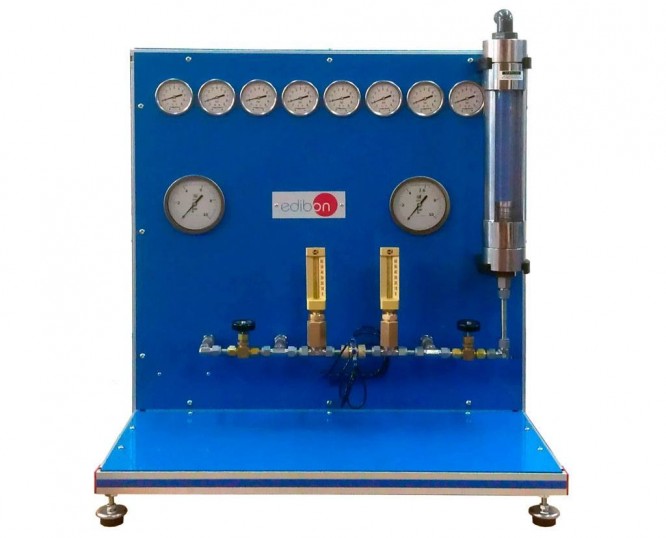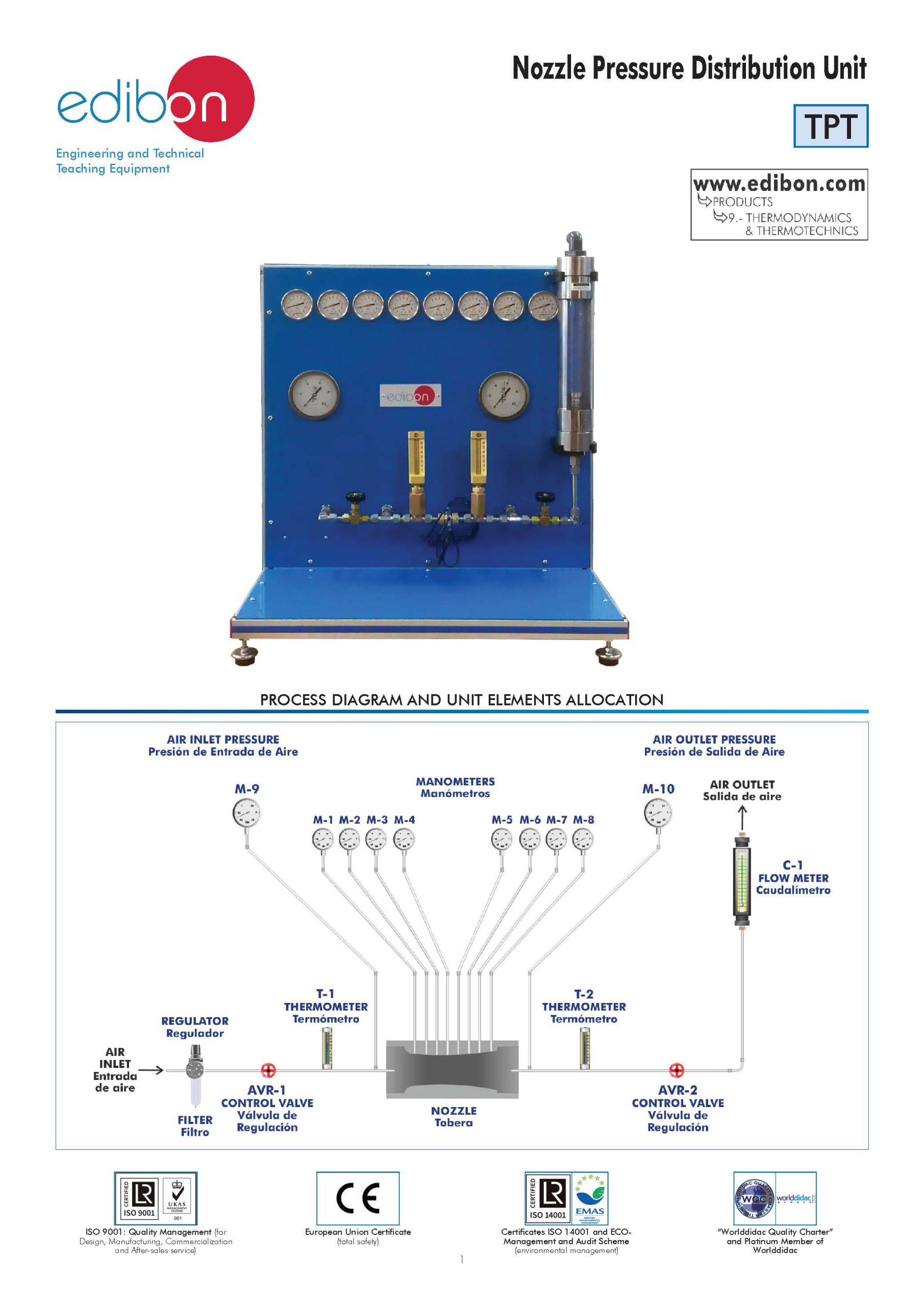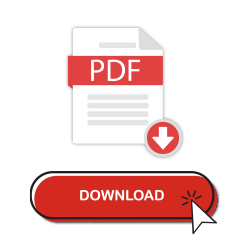
Nozzle Pressure Distribution Unit
INTRODUCTION
Nozzles are suitably shaped openings in which a fluid is accelerated while its pressure decreases. If the fluid is compressible (e.g. a gas or vapour), very high velocities can be obtained, with fairly moderate pressure ratios.
Nozzles are extremely important components in a wide variety of engineering applications, for instance: turbines, jet propulsion, rockets and eductors, etc.
The Nozzle Pressure Distribution Unit, “TPT”, has been designed to demonstrate the phenomena associated to fluxes through nozzles and to allow the students investigating quickly the pressure distribution in them. Besides, it allows the investigation of the mass flow rate through convergent-divergent and convergent nozzles.
EXERCISES AND PRACTICAL POSSIBILITIES
- Study of the flow in a convergent – divergent nozzle.
- Study of the flow in a convergent nozzle.
- Visual demonstration of the choking effect.
- Visual demonstration of the pressure distribution.
- Visual demonstration of the counter – pressure on the recompression position.
- Determination of the inlet pressure effect on the mass flow rate with a constant counter – pressure and comparison with the theoretical predictions.
- Determination of the counter-pressure effect on the mass flow rate.
- Observation of the pressure distribution in nozzles.
Other practical possibilities: - Visual demonstration of under expansion and over expansionm with re-compression.
- Investigation of the relationship between inlet pressure and mass flow rate.
- Investigation of the relationship between outlet pressure and mass flow rate for a convergent nozzle.
- Investigation of the relationship between outlet pressure and mass flow rate for convergent – divergent nozzles.
- Investigation of the pressure distribution in convergent and convergent – divergent nozzles when working over a variety of overall pressure ratios.
- Study of the effect of air temperature at the nozzles inlet and outlet.



